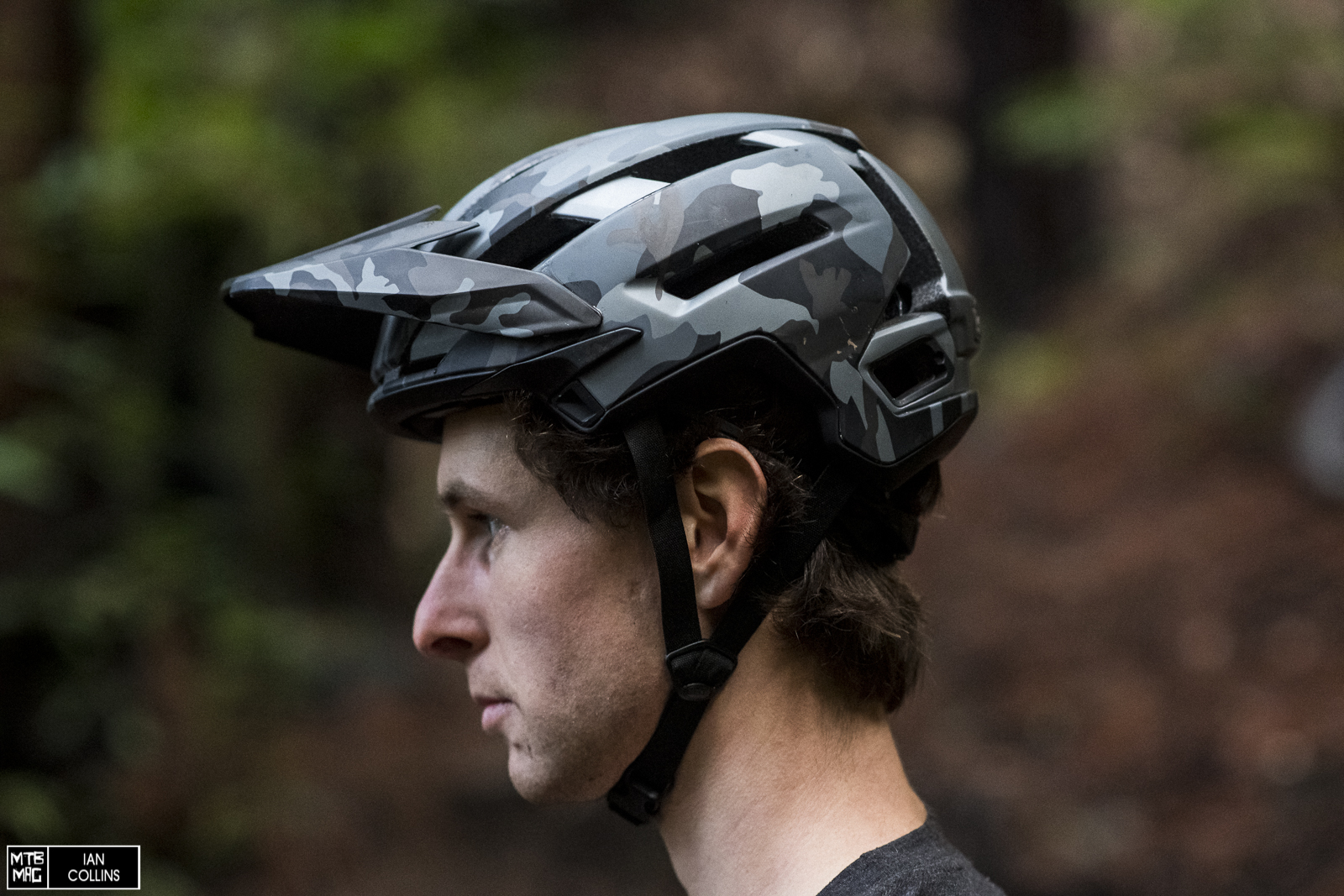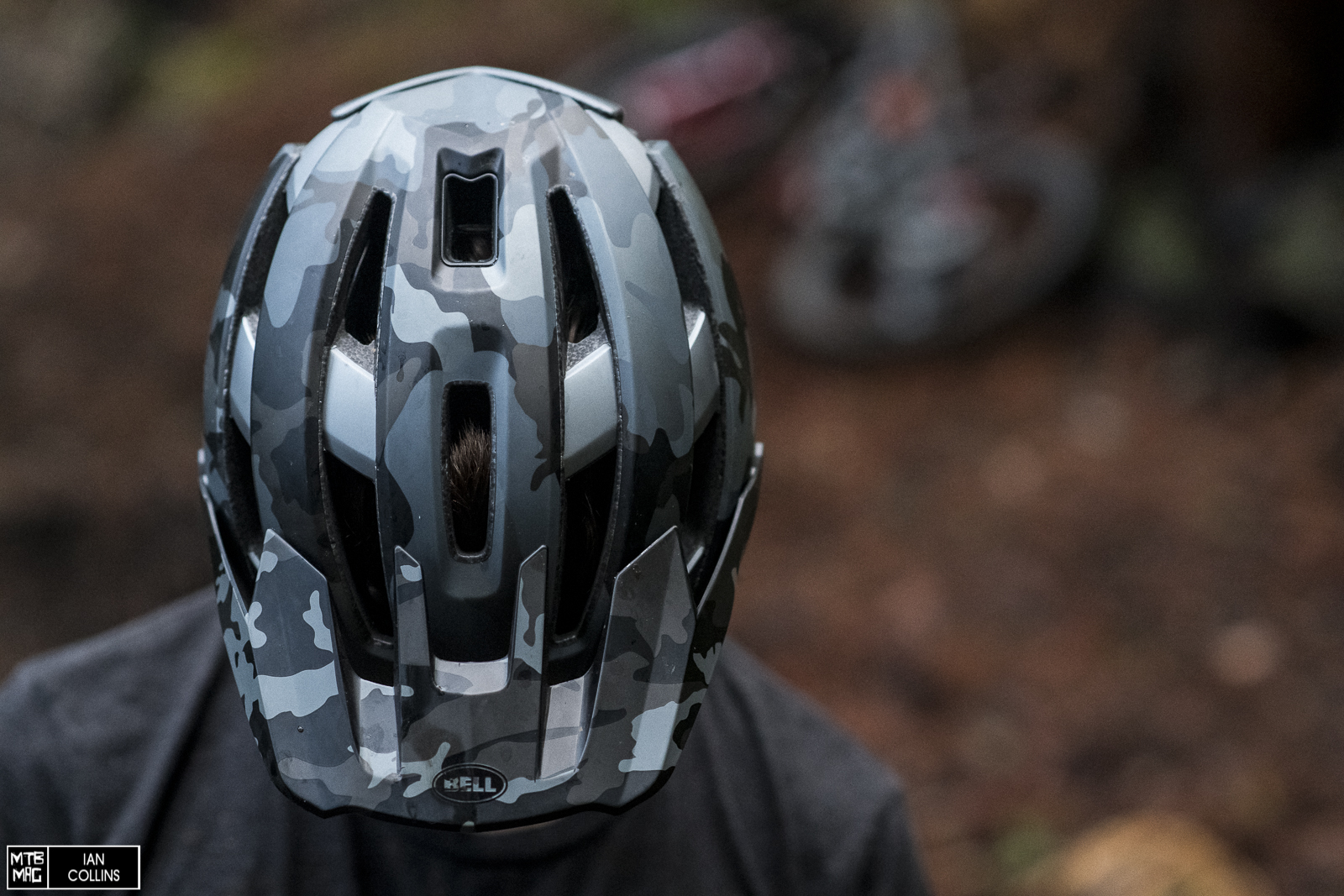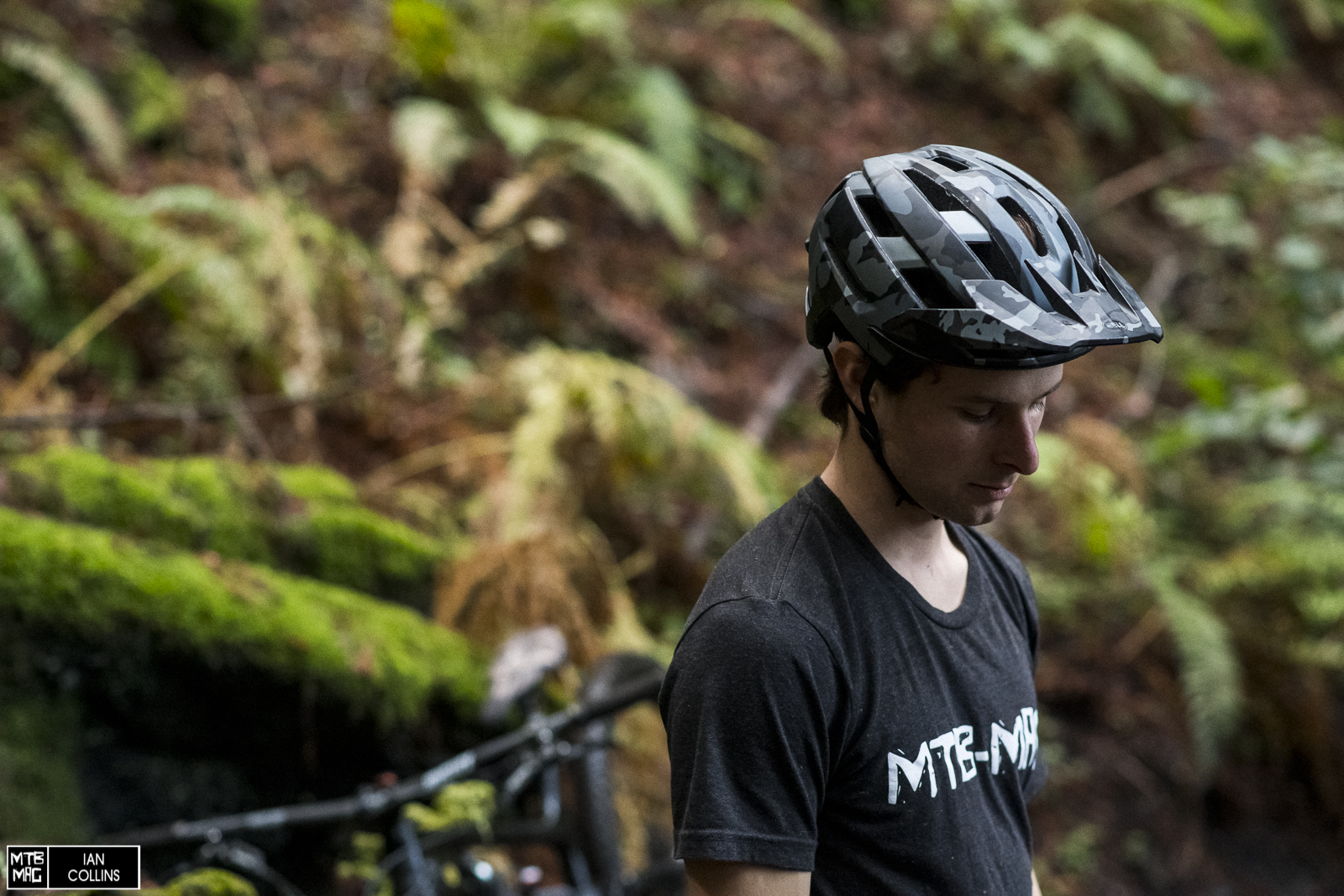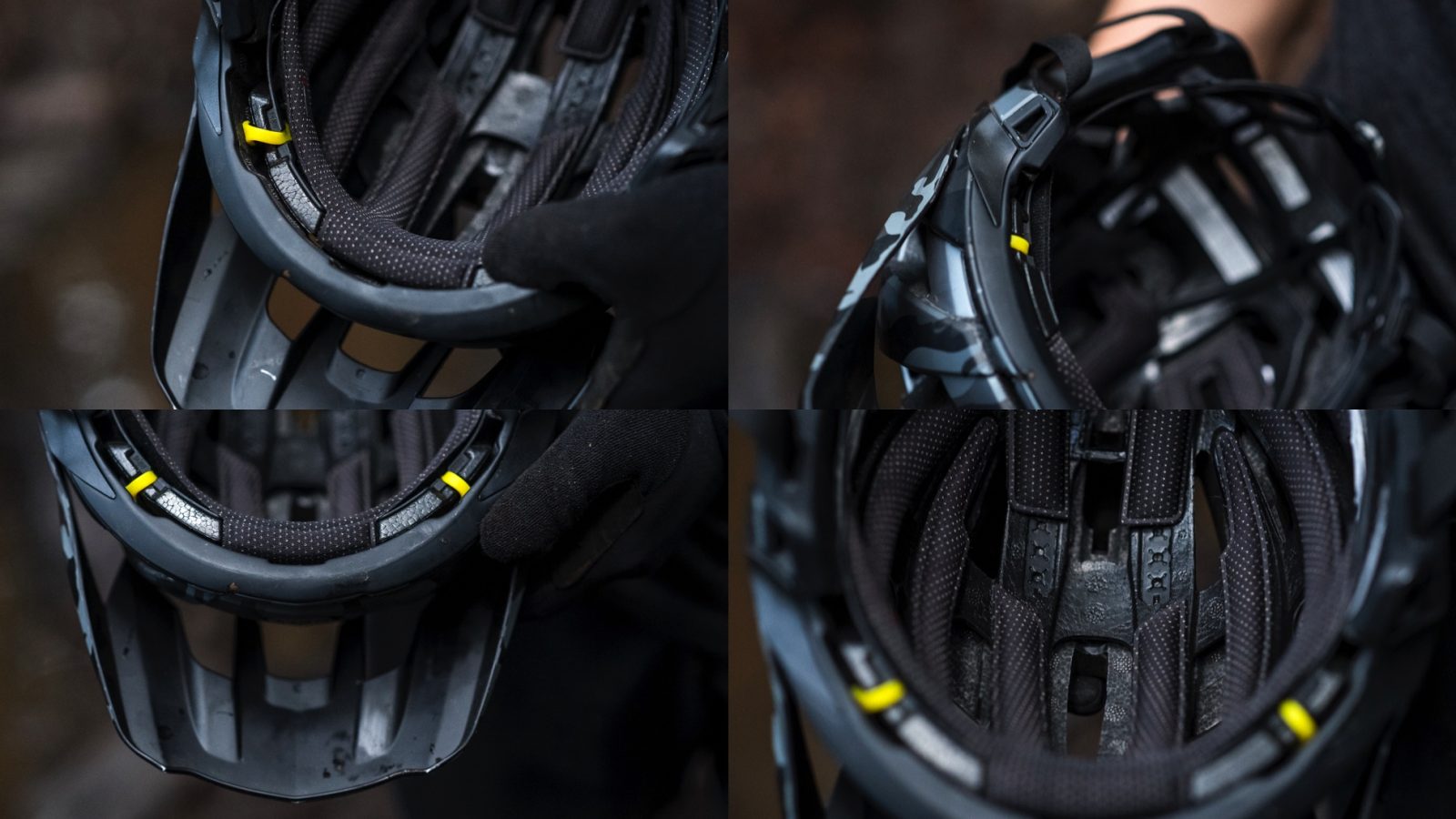[Tested] Bell Super Air
For the past few months, we’ve almost exclusively been riding in the Bell Super Air R. The helmet features Flex Spherical MIPS technology, and retails for $275 USD ($225 without chin bar). Sans chin bar, it’s along the same lines of the Sixer and could be considered the Bell’s follow up to it.

Specs
- 18 Vents
- Flex Spherical MIPS technology
- Goggleguide adjustable visor
- X-Static quick drying pads
- Overbrow ventilation
- Polycarbonate Shell
- Small, Medium, Large
- Black, Camo, Blue, Grey, Green, Red, White

The Float Fit system is easy to use, and fit well against the back of our head, our size medium felt tight enough after turning the float adjustment about 3/4 of the way.

The rear of the helmet has a bit of an unusual shape to it, and though it would seem to be a hot spot, we never found it to be an issue, as there’s plenty of venting surrounding it.

A large number of top vents provide great air flow, with the rearward center one serving as an integrated mounting location for a GoPro.

A Multi-position visor can be moved up and out of the way for goggle storage. The Camo color-way grew on us, and we became quite fond of the look.

Visible above is the flexible Spherical MIPS technology, essentially an inner EPS lining that rotates freely within the helmet to help prevent rotational impacts. The extended forehead pad helps greatly with sweat management and comfort. Also worth noting is the slot in front of the chain strap (pictured top right), intended for mounting the chin bar.

The ‘2-Click’ chin bar is an attachment that we didn’t find ourselves using all that often. The trails where we ride don’t warrant the added protection, though perhaps in a race setting we’d make us of it. Our experience with mounting the chin bar proved to be a bit of a struggle, we certainly wouldn’t recommend trying while the helmet is on. Once locked into place the helmet feels sturdy and secure, though the aesthetics (such as visor length) don’t match that of a more traditional full face.
On Trail
After many hours of pedaling under the Super Air we found it to be quite comfortable while climbing, and managed heat and perspiration well. The multi-position visor is a good idea for google storage while climbing etc. but we had a difficult time keeping it in the desired spot. Pre-set detents with no way to tighten the visor, made it difficult to fine tune, and lead to movement that was quite noticeable on rough sections of trail. We ended up using some super glue to secure the visor in the mid-way position. The X-Static padding is woven with silver, in the attempt to manage the un-avoidable odor and bacteria caused by long rides. We found the helmet pads to be very absorbent, and odor free for the duration of the test period, which is impressive in comparison to other options on the market.

While riding up to the trailhead, having a looser fit is alright for comfort’s sake, but when we began any rough descent, we found the helmet to move a bit on our forehead. When analyzing a helmet, it’s always difficult to discern what fault is caused by design flaw, and what is simply due to head shape. In the case of the Super Air, we believe the design is spot on, and the vertical movement is more due to the relation of head shape to helmet shape. We’d always recommend trying a helmet on first to confirm its fit, but it’s likely the Super Air will work for most, our tester just happens to have a more narrow head profile.

Overall
Though we didn’t have any crashes in the Super Air R, the helmet is quite likely to be impressively safe, and we felt confident in the Flex Spherical MIPS. If we were to purchase this for our typical trail riding, we’d likely opt for the half shell option, and pick up a chin bar down the road if needed. The build quality and comfort is impressive, we’d just like to see stiffened detents in the visor, or two screws to keep it in place. If you’re looking for the latest in safety tech, and want one helmet that can do it all, the Super Air R is a good candidate to look into.
The post [Tested] Bell Super Air appeared first on MTB-MAG.COM.
